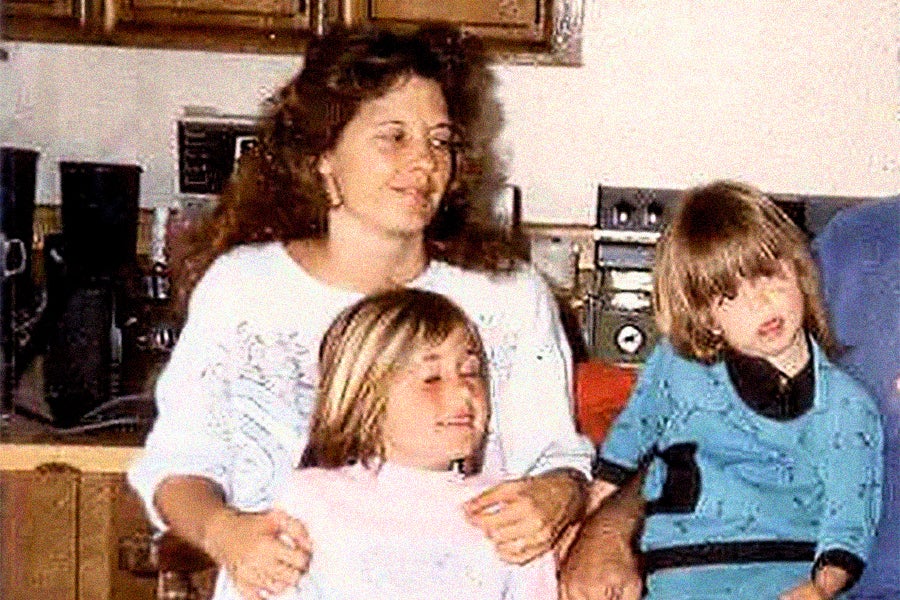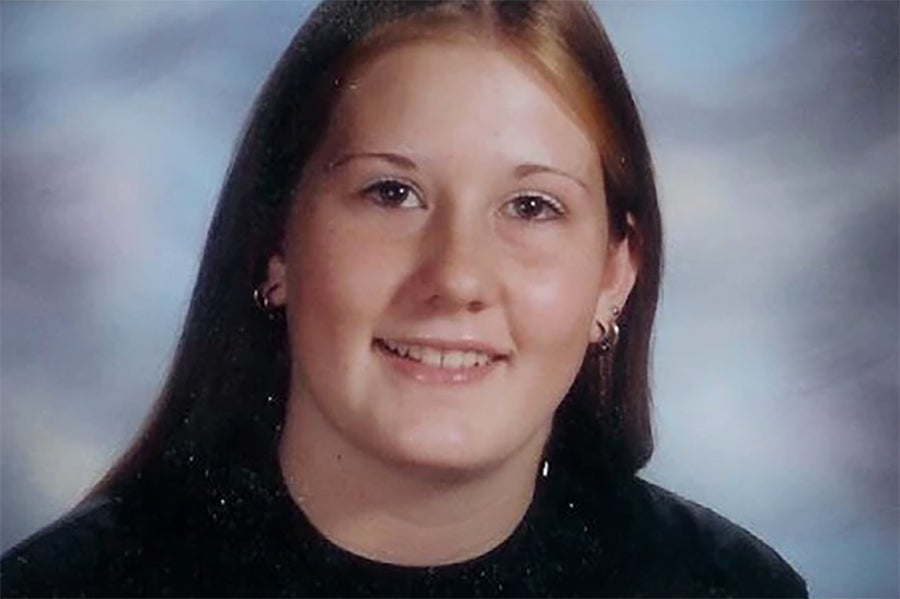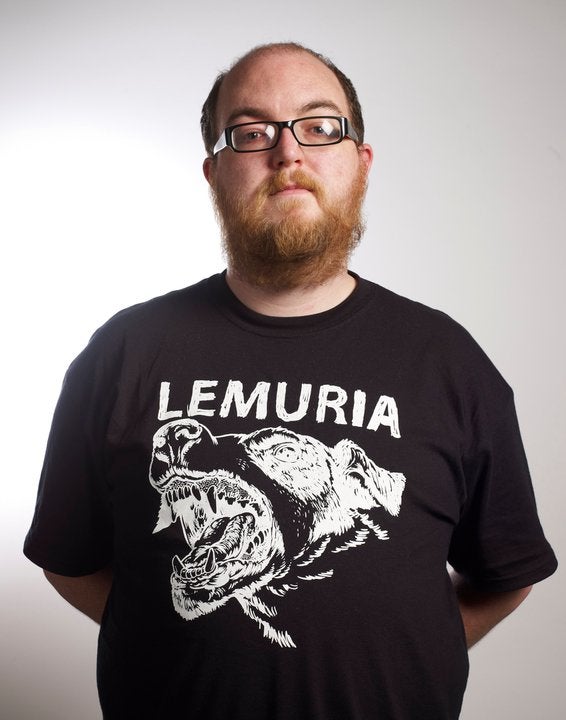By all rights, the story of Alissa Turney’s disappearance should have begun on May 17, 2001, the final day of her junior year at Paradise Valley High School in Phoenix. Her stepfather, Michael Roy Turney, had dropped her off in the morning per usual, then picked her up early to go for lunch. An argument, however, quickly ensued instead. Turney would later say it concerned Alissa wanting more freedom. “I told her that as long as you’re under my roof, you’re going to have to check in with daddy, because daddy is a nervous wreck if you don’t,” he explained to ABC News. “She was definitely upset.”
Turney claimed Alissa had stormed off, while he left to pick up his younger daughter, Sarah, who was Alissa’s half-sister, the two of them sharing the same mother, who had died a few years previously. (Alissa didn’t come into Turney’s life until she was three.) That afternoon was Sarah’s last day of seventh grade. She’d spent it at a water park. “I don’t remember anything unusual about his behavior,” Sarah tells me. “But he was late, so I’d walked to a friend’s house nearby, phoned him from there and told him that’s where I was.”

“He was frantic that Alissa wasn’t picking up her cell phone, one of those Nokia phones that was like a brick,” she continues. “I didn’t have a cell at the time. I guess she was allowed one because she was older. My dad always wanted to know where Alissa was — and what she was doing. My dad was often frantic about Alissa. The only thing that was unusual was something I realized years later: I was smoking cigarettes with my friends that day. Obviously a 12-year-old shouldn’t be smoking, but it was one of the few rules I had with my father. I shouldn’t smoke cigarettes because lung cancer had been what had killed my mother when I was very young. I must have smelt of cigarettes when I got into his truck; I was smoking only minutes earlier. And yet, he never said anything about it. Any other time I would have been in so much trouble.”
Instead, Turney asked Sarah to call Alissa. She still didn’t pick up, however. Turney tried to file a missing person’s report with the police that evening. But: “She’s just a runaway,” the police told him. She’d even left a note. Sarah had found it on the dresser in Alissa’s room. “Sarah, you wanted me gone. Now you have it,” it read. The note concluded by saying that she’d taken $300 from her dad. It was definitely Alissa’s handwriting. Neat. Unnecessarily big loops on the A’s. It declared that she’d left for California. Uncharacteristically, though, Alissa’s room was a mess. Her backpack was on the floor, the contents spilling out. And when Turney and Sarah tried to call Alissa from the confines of her room, her phone buzzed on the dresser. Nor did the note make any mention of Alissa’s fight with her dad. Nothing about the plans she’d made with friends to go to a party that evening either.
Still, Sarah wasn’t overly concerned. “She’ll be back soon,” she thought. After all, Alissa was often threatening to run away.
The police must have thought something similar. Because for whatever reason (Laziness? Ineptitude? A combination of the two?), there was no police investigation into Alissa’s disappearance. No interviews with family or friends. No Amber Alert. No questions about why the almost $1,800 in her bank account hadn’t been accessed or why she hadn’t taken any possessions with her. “Me and my brother got swabbed for DNA, but that’s it,” says Sarah. Nobody got in a squad car and came to visit the Turney’s “modest three-bedroom, two-bathroom home in a decent area of North Phoenix.” As Sarah puts it, “My dad always told me that the police didn’t care. He said that he put up posters on lampposts and that they told him to take them down. He really made me believe he was the only one doing anything to find her.”
Turney was a hive of activity. “He had flyers stuck to the dashboard of his truck for years,” says Sarah. “He’d tell everyone and anyone about Alissa. He talked about her constantly — at the pharmacy, at the bank, at the grocery store. With hindsight, he made a fuss with everyone, other than with the police…”
A week after Alissa disappeared, around 5 a.m., Turney said he received a call from what he believed to be a California number. As he told ABC, “The conversation was sort of scrambled. It was one-way. I said, ‘Is this you, Alissa?’ The voice sounded a little bit different. But then again, I could realize it was Alissa. And then, she, um… Basically, it’s as though she pulled the phone away from her and said a few cuss words and stuff, about, ‘Leave me alone.’”
That’s right around when he said the phone went dead.
“It took me a while to realize she was gone,” Sarah recalls. “That was the summer I began experimenting with alcohol and drugs, and so while I missed her, I had other things going on. I’m ashamed to say that as the years passed, I almost got sick of hearing about her and hearing my dad tell the same old stories. I was a bratty teenager, y’know? I felt like Alissa was always there, even when she wasn’t. A couple of days after she went missing, my dad gave me her cell phone. Same number…”
Sarah speaks softer now. “But I also remember sleeping in her bed every night. Wearing her clothes. I never wanted to get rid of anything that was hers, but I remained firm for a long time that she would be back at any point — ready to beat me up for taking her clothes. Looking back in adulthood, I think I was trying to be like her. I was trying to fill the void of my missing sister. I really, really loved my sister.”
* * * * *
The story of Alissa Turney’s disappearance actually begins in 2006, five years after she went missing, when a self-proclaimed serial killer, Thomas Albert Hymer (nickname: “Psycho”), turned to a Florida prison guard, handed him a picture of Alissa torn from the pages of USA Today and said, “I killed her. And I’m going to make you famous.”
Hymer had initially been arrested a few months after Alissa’s disappearance, in Gray, Georgia. He was driving a 1996 Honda belonging to a 30-year-old video-store employee named Sandra Goodman. The day before she’d been found strangled, stabbed and wedged under a bed in a motel on the seafront of Fort Lauderdale. Hymer was sentenced to life in prison for her muder in 2003.
He never explained his motivations for killing Goodman, but three years later, he suddenly started writing letters to local investigators claiming that he’d killed another 21 people — women like Alissa who had dropped off the grid. He graphically described what he’d done to them. In Alissa’s case, he said he replicated how he’d killed Goodman. He’d strangled her to death in a hotel, and then dismembered her in the bathtub before ditching her remains at a recycling center.
Detectives from the Phoenix PD’s Missing and Unidentified Persons Unit flew to Florida to speak with Hymer. It didn’t take long however, before they agreed that Hymer’s description of Alissa didn’t sound viable. For starters, he’d said Alissa was a heroin addict. This was news to them. Pushed further, Hymer admitted he might have been mistaken. He did kill a woman, but maybe it wasn’t Alissa. He failed a polygraph.
He did, though, succeed in placing Alissa’s case back in the spotlight, as his tale was widely reported in newspapers. This prompted Alissa’s friends, who hadn’t been interviewed in 2001, to contact police with a host of disturbing allegations about Turney’s relationship with his step-daughter. “It forced them to finally look into my father,” says Sarah. “It took [police] two minutes to realize that something was extremely wrong.”
For all his attempts to search for Alissa, Turney had never been cooperative with Phoenix Police, unwilling to consent to a polygraph or an interview. As a result, Sarah had become the point person for communication between the police and the family. And so, on December 11, 2008, detectives called Sarah and told her they believed her father was responsible for Alissa’s disappearance. Based on communication with more than a dozen of Alissa’s friends who had come forward in the wake of Hymer’s false confession, they thought Turney might have been molesting Alissa. “They told me all sorts of things,” Sarah says. “They told me I had another sister I didn’t know about, from his marriage between his first wife and mine and Alissa’s mother.”

Sarah sighs: “And yet, call it stupidity, or call it loyalty to my father, but I didn’t have any suspicions, even after the police told me it was him. I heard the accusations, I saw the evidence and the interviews and it still took me some time to understand what really happened. He’d never hit me. He’d never abused me. He gave me, literally, anything I wanted. When they told me they were going to raid the house, my first thought was, ‘I have to get home and help him.’”
“The thing with my dad,” Sarah continues, “is he’d be the guy who would go give my friends five gallons of gas if they ran out. Or give them $10 because they needed it. He was so outwardly kind and generous. He always helped our neighbors out. He gave to charity. He fixed people’s stuff.”
Back at Turney’s house, a hundred or so neighboring residents had been evacuated from their homes. They didn’t stray far, however, jutting up against the police tape that lined the streets in order to gawk at the major operation that was now taking place. On the other side of the tape, the Phoenix Police Bomb Squad, as well as the Bureau of Alcohol, Tobacco, Firearms and Explosives, worked in and around the home Sarah had shared with her father. She was escorted inside to retrieve her three dogs. She wouldn’t learn why the bomb squad had been present until she watched the news later that evening. “This is the largest seizure of [improvised explosive devices] the Phoenix Police Department has ever made,” said a police spokesman.
In all, the cops had uncovered more than 28 pipe bombs and other explosive weaponry. Not to mention, 19 loaded, high-caliber assault rifles, two handmade silencers and a van filled with gasoline. Similarly, when they apprehended Turney while he was collecting his mail, he’d been carrying a knife, two loaded guns and seven magazines of ammunition. Inside the house, within a safe, they’d found a 98-page manifesto entitled “Diary of a Madman Martyr,” written by Turney himself, which attempted to explain why he was so well-armed. There were multiple copies, each addressed to a different media outlet.
In the 1980s, Turney had been a disgruntled electrical worker, particularly upset about his poor working conditions. “He described it as ‘unreasonable hazards,’” explains Sarah. “He said he’d been a whistleblower.” This, he stated in his manifesto, had resulted in the union harboring a grudge against him. It also claimed that the union had kidnapped and murdered Alissa. She was buried in Desert Center, California. In retaliation, he’d killed the two “assassins” who had carried out the hit on his step-daughter.
The manifesto concluded with an “operational plan.” This, Turney wrote, consisted of him driving an explosive-laden van into the union hall. “It had been in our yard for months,” says Sarah. “My friends and I used to sit in it and smoke cigarettes.” Turney planned to shoot any survivors. Then he would kill himself.
“I’ve never understood the significance of Desert Center,” says Sarah. “It wasn’t like it was a place we ever visited or anything. It had no significance to us that I knew. It’s four or five hours away from where we lived. I just think it was a place he could say that people would then search where there definitely wouldn’t be a body. You have to remember that he’d been on disability for so many years at that point, that he’d had all the time in the world to do research. He’d been to California many times after Alissa disappeared saying he was ‘looking for her.’”
Other items uncovered during the raid began to paint a picture of Alissa’s existence under Turney’s roof. There were, for instance, many homemade contracts. One was dated from 1999 — two years prior to Alissa’s disappearance — asking the then 16-year-old to sign her name next to the declaration that Michael Turney had never molested her. It was something she’d told many others, though, that happened frequently. Her boyfriend, John Laakman, told police that Alissa confided in him that Turney had once taken her out to some deserted land and sexually assaulted her. A school teacher and friends offered a similar version of events. Some friends even said that Alissa had told them that one night she’d woken up, gagged, bound and tied to a chair, with Turney on top of her.
A nephew of Turney’s — a man named David who lived with Turney, Sarah and Alissa for around six months in the late 1990s — claimed that when he attempted to watch a homemade VHS cassette labeled “Doctor Dolittle,” the tape contained footage of a woman laying on the sofa where he now sat, wearing nothing but shorts, with a newspaper over her face. He was sure it was Alissa. In another frame, another woman was also in the room, her face similarly covered in newspaper. Meanwhile, Turney sat in the room silently, just watching. David immediately packed up and moved out. (For his part, Turney has vehemently denied David’s claims, dismissing him as a drunk.)
Overall, police found hundreds of VHS tapes within the Turney home. He had surveillance cameras everywhere — both indoors and outdoors — and they definitely seemed uniquely focused on Alissa, even capturing her and her boyfriend making out. All telephone calls in and out of the house were set to be automatically recorded, too. Suspiciously, though, despite so much footage and so much observation, no footage existed of the day Alissa went missing. The same for the day a call from her allegedly came in from California.
Still, police had more than enough on Turney to charge and convict him with the unlawful possession of pipe bombs. And so, in June 2010, Turney was sentenced to 10 years in federal prison. He served a total of seven of those years before being released in August 2017.
“There are things about the time I spent living with my dad that alarm me now,” says Sarah. “But at the time, I can’t say they did. He always went to gun shows — he would buy me jewelry from gun shows; I got my first pearl necklace from there! There were a lot of guns, but everyone has a gun in Phoenix. He’d also weld these energy drink bottles together — god knows why — and I’d get pissed that he was making the house untidy, but I just thought he was tinkering. To give all of this some context, I had the master bedroom in the house. I had my own bathroom. I had a fridge in my room. I had my own door to the outside. It was like a house within a house, and I came and went as I pleased.”
* * * * *
Alissa was born on April 3, 1984. “She was kind and caring but strong,” says Sarah. “She loved rap and metal. She listened to Marilyn Manson, Eminem, Tool, System of A Down and Missy Elliott. Her favorite movies were Empire Records, Liar Liar, What’s Eating Gilbert Grape and People Under the Stairs. But she loved all of the kids shows, too — Rainbow Brite and Blue’s Clues chief among them. She didn’t know what she wanted to do for a living, but she knew she wanted to be a mom. She took child development in school.”

In 1987, three years after Alissa was born, Alissa’s mother, Barbara Strahm, met Michael Turney. He’d been a deputy for the Maricopa Country, Arizona Sheriff’s Office in the 1970s. Barbara, rebounding from a difficult marriage to Alissa’s biological father, described him as her “knight in shining armor.” They quickly got married. Alissa had an older brother. Michael had three sons who became step-brothers to Alissa. The prefix “step” wasn’t a word used in the Turney household, though. They were just family. Neighbors joked about them being akin to The Brady Bunch. Turney adopted Alissa. Barbara and Turney had Sarah together in 1988.
The consensus among those close to Turney agree that things changed — broke, really — when he’d left his electrical job. A few years later, he had an accident and his mood darkened even more. “He’d been on a roof,” explains Sarah. “The guy holding the ladder slipped, and the ladder shattered his knee. I can’t ever remember him being in a cast, but from that point on, he never worked again. Some of it had to do with his mental health though. He’d always had mental health problems. A condition of his disability was that he had to see a therapist twice a week. I was very familiar with his psychiatrist. My dad would visit him so often that when I was a kid, I would play in his lobby.”
Turney was already angry about the injury to his knee, and then, Barbara died of lung cancer. “I was only four,” says Sarah. “She’d had it less than two years. She’d had some pretty aggressive chemotherapy, and she’d lost the battle. It was pretty sudden. She was only 34. I’m told that when she died, my father completely broke. He went into a deep depression and became a person that my older brothers didn’t recognize.” Sarah says she believes her dad never got over her mother’s death. “I think he loves her even now,” she says. “It’s a very unhealthy kind of love though. I don’t talk to him anymore, but when I did, he’d always tell me that he’d seen her ghost. It started when he was in prison. I dropped out of high school. I eventually pulled things around and graduated college, but when I dropped out of school, he told me, ‘Your mom is really disappointed that you dropped out of school.’”
With his wife now deceased, Turney began treating his two young daughters differently. Although Alissa was older, he was stricter on her. She was more rebellious. She smoked a bit of pot. She would sometimes skip school. To a more measured mind, she was just a teenager trying to find herself while mourning the death of her mother. Turney’s response, however, was to search her belongings, monitor her calls, and when she clocked in for shifts at the local Jack In The Box, sit in the parking lot and watch her work.
Conversely, Turney’s approach to parenting Sarah was, in her words, “night and day.” Where Alissa couldn’t go to parties, Sarah was allowed to move her boyfriend into the family home. Turney bought his biological daughter a mini-fridge and filled it with beer. “For me, it was a teenager’s paradise,” she says. “Alissa didn’t have any of that.” After Alissa disappeared, Turney gave Sarah full control over the surveillance systems in the home. He removed the camera placed in the air vent installed specifically with the intention of observing Alissa. He bought Sarah a device that could identify if secret cameras were present to reassure her he wasn’t spying on her. Sarah says, with regret, “I’m ashamed to say that I was so brainwashed by my father saying, ‘We need to keep an eye on Alissa,’ that I didn’t realize how weird it was until years later.”
* * * * *
Last year, a podcast named Missing Alissa launched. It’s hosted by Phoenix-based journalist Ottavia Zappala and recaps and further investigates Alissa’s disappearance over 14 episodes. “The podcast has changed this case forever,” smiles Sarah. “There have been so many new interviews and new pieces of evidence explored. People who don’t want to go to the police feel safe going there.”
“With this case, there’s not a lot of faith in the police because of the way they’ve handled it so far,” continues Sarah. “Also, many people are scared of my dad. People tell me that all the time. There are people with information about Alissa that I’d love to talk to the media, but they won’t because they’re scared that my dad will come after them. So they go to the podcast instead. Though some still won’t even go there either.”
In one episode, Zappala manages to get Turney on the phone. During a tense call — in which Turney does everything he can to control the conversation, either by talking over Zappala or sarcastically shutting her down — he says he never had plans to attack the International Brotherhood of Electrical Workers at all, but that he did plan to go to the union and kill himself in order to “raise awareness of Alissa’s disappearance.” As for the pipe bombs? They were just fireworks.
The podcast also shares details of a conversation Sarah had with her father six months after his release from prison. She flatly asked him, “Did you do it?” Turney responded that if Sarah wants to know the truth, “she should come visit him on his deathbed.” “He thought I was there to start some kind of relationship with him,” says Sarah. “I told him I wasn’t. He was taken aback. I told him I wanted the truth. I told him he was 70-years-old, and I didn’t want him to die without me looking into his eyes and asking him these questions. He was so angry.”
“We spoke for over an hour,” she recalls. “I met with him at a Starbucks. He was trying to be emotionally manipulative; then he got aggressive when that didn’t work. He spoke through his teeth and leaned in close to my face when he spoke. It was pathetic. He went off on crazy tangents about his childhood. But the two most noteworthy statements were that he’d give me all of the honest answers I want to hear on his deathbed, and that he’d confess to everything if the state agreed to give him lethal injection within 10 days. This wasn’t a slip. He intentionally made two separate statements about the conditions in which he’d confess.”
To date, this is the last time Sarah has talked to her father.
The police, however, say they can’t do anything with Sarah’s covert recording. “They’ve told me for years that they were going to prosecute. They told me they didn’t want to combine charges, so they were going to arrest him for Alissa’s murder after the time he served for the bomb charges. But that never happened. They sat down with me and told me that they couldn’t do anything without a body. Then they told me that my best chance of getting a prosecution is media exposure, so here I am.”
To that end, Sarah recently started an online petition asking police to prosecute Turney. It currently has 105,000 signatures. A few years ago, digging through her father’s possessions, she found a map. It had marked coordinates depicting a location in the California desert. She forwarded it to the police, but allegedly, the location has never been further investigated. “I do think they think he did it,” she says. “A 1,000 percent I think that. They’ve told me. I think they’re just trying to play by the rules, as frustrating as that is.”
Sarah has also obsessively reviewed the extensive home video library Turney created, discovering one VHS of note recorded on March 29, 1997. In it, the Turney family is playing catch in the park. Alissa calls her step-father a “pervert.” Flustered, Turney tries to delete the footage, repeatedly calling his step-daughter a “stupid moron” — not aggressively necessarily, but seemingly in an attempt to write off the comment as an off-color joke.
She hopes, of course, all of this amateur sleuthing will ultimately lead to both a conviction and closure. “I don’t think my father will ever confess,” she recently told true crime YouTuber Kendall Rae, “but I do think it’ll go to trial, eventually…”
The most recent comment on Rae’s video is from Turney’s aforementioned nephew David. It reads, “I loved Mike Turney. He was more of a father to me than my real [father] and stepfather. I truly wanted to aspire to be like him. I don’t want any attention, and I do not seek attention. This isn’t about me. This is about a 17-year-old girl whose life was snuffed out because her stepfather didn’t want anyone to know of his dirty secret. Mike Turney killed her. And that truth will come out.”
“I’m grateful that I still have memories of Alissa that aren’t tarnished by everything that’s happened after she went away,” says Sarah. “When I think of her, I still think of my tough older sister who taught me how to be tough, too. She gave me so much strength when she was here. Now I’m using that strength to fight for the justice she deserves.”

